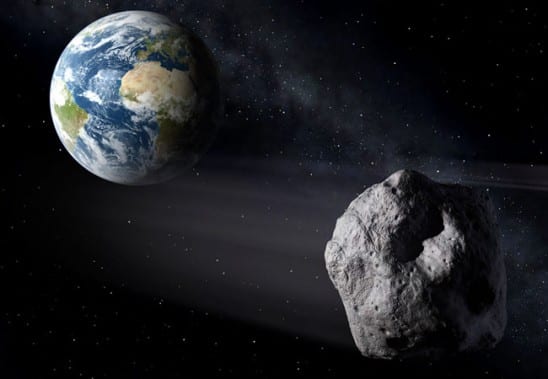Dueling Orbits: Comet and Asteroid Come to Light at Once
 Most nights, stars twinkle and the moon shines bright. There may even be a shooting star. But on Monday, Jan. 26, stargazers will have a rare opportunity to catch a glimpse of an asteroid and a comet on the same night.
Most nights, stars twinkle and the moon shines bright. There may even be a shooting star. But on Monday, Jan. 26, stargazers will have a rare opportunity to catch a glimpse of an asteroid and a comet on the same night.
UCF’s Robinson Observatory will open its doors to the public from 7:30 to 9:30 p.m. so guests can view all the action.
At any given time there are thousands of asteroids and dozens of comets in Earth’s neighborhood of the solar system, but it is unusual for one of each to be close enough and bright enough to be seen at the same time with just a small telescope.
“It’s a pretty unique opportunity for us in Orlando,” said Yan Fernandez, director of the observatory and an associate professor of physics. “Both objects should be bright enough to see with our telescopes even with Orlando’s light pollution. The asteroid in particular is quite interesting, so much so that I and some colleagues will be using telescopes in Hawaii and in Arecibo (Puerto Rico) to study it next week as it continues its journey through our solar system.”
The asteroid making its appearance Monday is near-Earth asteroid 2004 BL86, which has an orbit that almost intersects Earth’s. After an 11-year hiatus, BL86 will safely pass Earth’s orbit. Typically, BL86 and Earth are nowhere near each other on their respective orbits. But on Monday BL86 will pass about three times the distance of Earth to the moon, or about 750,000 miles from Earth. By astronomical standards, this distance is relatively small. BL86 also happens to be relatively large in size for a near-Earth asteroid. Measuring between 1,312 and 3, 280 feet in diameter, will be pretty bright as it passes by Earth making it visible through an eight-inch telescope.
That same evening, observers will also get a glimpse of C/2014 Q2 Comet Lovejoy. Lovejoy is a long-period comet that was last seen in the inner solar system about 11,000 years ago. Like the visiting asteroid, Lovejoy will be relatively bright and close to Earth. Although Lovejoy will be farther away than BL86, the comet will be active enough for view through small telescopes.
And if comets and asteroids just aren’t your thing, Jupiter and the moon also will be visible, weather permitting. The 20-inch telescope housed in the Robinson Observatory will be following all the action and taking pictures.
The night viewing should get underway around 7:30 p.m. There is no cost to attend. Rain or heavy clouds would force a cancellation of the event. Check planets.ucf.edu/observatory/openhouse or facebook.com/UCFObservatory for updates about the event.
To view the original article visit UCF Today.
